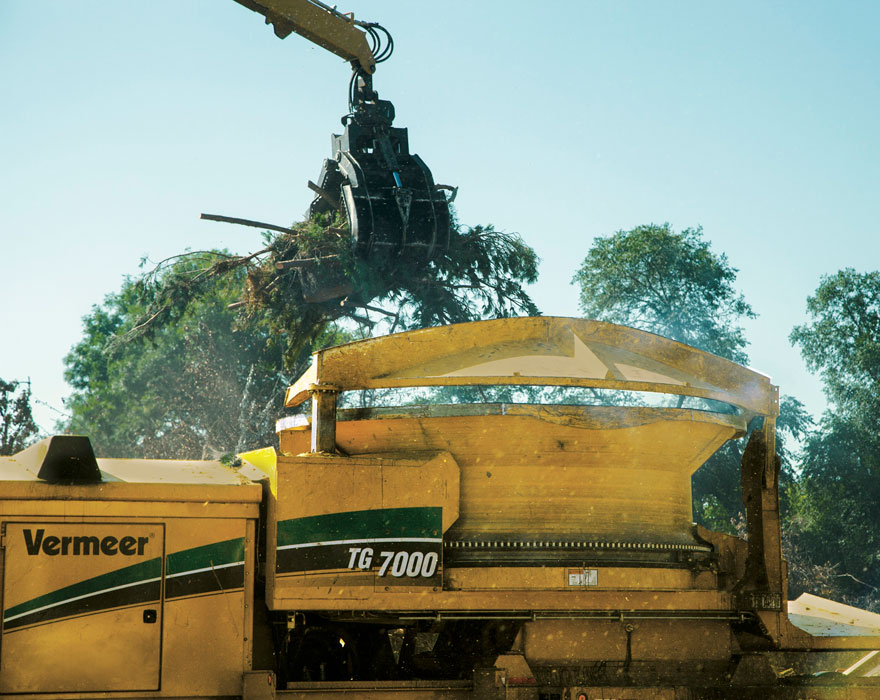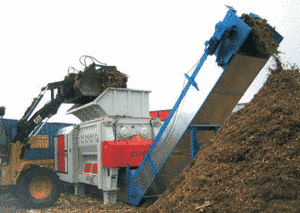Efficient Timber Processing Begins Below: Open the Possible of Wood Grinders
Efficient Timber Processing Begins Below: Open the Possible of Wood Grinders
Blog Article
Enhance Recycling Efforts With Powerful Wood Grinders: the Key to Effective Waste Administration
Effective waste monitoring is a pressing concern in today's society, and boosting recycling initiatives is an essential facet of sustainable waste reduction (wood grinders). One effective tool that plays a considerable role in this venture is the timber grinder. These makers offer a way to successfully process timber waste, changing it into useful sources. The advantages of timber grinders extend past recycling effectiveness, as they likewise add to ecological preservation and expense savings. To completely recognize the potential of these powerful devices in waste monitoring, it is vital to discover their significance, functions, and finest techniques for including them into recycling programs. By doing so, we can uncover the key to efficient waste administration and its favorable influence on our setting and areas.
The Value of Timber Grinders in Waste Management
Wood mills play a critical duty in waste monitoring by effectively reducing the quantity of timber waste and promoting its correct disposal. Timber waste, such as logs, branches, and pallets, can use up beneficial area in land fills and add to ecological contamination if not managed correctly. Timber mills are particularly designed to damage down big pieces of wood right into smaller sized, much more manageable dimensions, making it much easier to dispose and transport of the waste.
Among the essential benefits of timber grinders is their capability to decrease the quantity of timber waste. By breaking down huge pieces of timber into smaller fragments, wood mills can significantly lower the amount of room required for storage space and disposal. This not only aids to enhance land use however additionally lowers transportation prices related to carrying large timber waste.
Additionally, timber mills help with the correct disposal of timber waste. The processed wood waste can be effectively recycled or repurposed for different applications such as compost, biomass fuel, or animal bed linen. By changing timber waste into useful sources, timber grinders add to the circular economy and promote lasting waste administration practices.
Exactly How Timber Grinders Improve Reusing Efficiency
Wood grinders play a crucial role in improving recycling effectiveness by changing cumbersome timber waste right into beneficial sources. These powerful devices are developed to effectively damage down huge items of timber right into smaller, extra manageable sizes, permitting simpler processing and recycling. By lowering the size of the timber waste, wood grinders allow reliable transportation and storage, inevitably saving time, area, and resources.
Among the major advantages of timber grinders is their capability to convert timber waste into important products such as compost, garden compost, or biomass fuel. Via the grinding procedure, the wood waste is changed right into a fine, uniform material that can be used in numerous applications. Compost can be used for landscape design purposes, compost can improve dirt and promote plant growth, and biomass gas can be utilized to generate warmth and electrical power.
Additionally, timber mills assist to decrease the ecological effect of wood waste by diverting it from landfills. By reusing wood waste, it reduces the need for brand-new basic materials, saves energy, and lowers greenhouse gas exhausts connected with the production and disposal of wood products.

Advantages of Utilizing Powerful Wood Grinders for Waste Decrease
Making use of powerful timber grinders for waste decrease provides countless benefits in terms of performance and sustainability. These devices are made to efficiently and successfully grind wood waste right into smaller, extra workable pieces, lowering the volume of waste generated.
In addition, powerful timber grinders contribute to the sustainability of waste monitoring initiatives. The ground wood waste can be repurposed and made use of in different Your Domain Name sectors, such as biomass energy manufacturing, pet bedding, or mulch manufacturing. This creates a circular economic situation where waste materials are reused and recycled, reducing the requirement for brand-new basic materials and reducing ecological influence.
Furthermore, utilizing timber mills for waste decrease can also enhance work environment safety and security. By grinding timber waste, the risk of injuries from taking care of bulky and big items of waste is considerably minimized. The mills are outfitted with safety and security features to ensure the security of operators and stop mishaps.
Trick Attributes to Take Into Consideration When Choosing a Wood Grinder

One vital feature to think about is the power of the mill. Greater horse power permits the machine to process larger volumes of timber waste swiftly and successfully. Additionally, a powerful motor guarantees that the grinder can deal with hard products and keep regular efficiency over expanded durations.
Another key feature to look for is the size and design of the grinding chamber. A larger chamber enables more wood waste to be processed at the same time, minimizing downtime for clearing and raising total productivity. Furthermore, a well-designed chamber with strategically placed cutting mechanisms ensures uniform grinding and reduces the danger of jams or obstructions.
Efficient waste management calls for a timber mill with robust cutting mechanisms. Try to find grinders equipped with sharp, durable blades or hammers that can properly shred and procedure the wood waste. Additionally, some mills provide adjustable setups, enabling operators to tailor the size and uniformity of the outcome material.
Reduce of upkeep is likewise a vital factor to consider. Search for grinders that supply simple access to the grinding chamber and reducing devices, enabling fast and easy cleansing and blade substitute. This makes certain marginal downtime and optimizes the mill's general life expectancy.
Finest Practices for Incorporating Wood Grinders in Recycling Programs
In order to efficiently incorporate wood grinders into recycling programs, it is vital to apply ideal techniques that enhance their usage and make best use of waste reduction initiatives. One vital best technique is to correctly preserve and service the wood mills often. This includes regular evaluations and cleaning to guarantee that the devices is in optimum problem and running effectively. By keeping the grinders properly maintained, the risk of malfunctions and downtime is decreased, enabling for undisturbed recycling procedures.
One more finest method is to train reusing program team on the correct procedure and upkeep of the timber mills. This consists of enlightening them on safety and security methods, such as putting on appropriate protective gear and following proper operating treatments. In addition, team should be educated on just how to recognize and quickly resolve any issues that may occur during the grinding procedure.
It is additionally vital to create a thorough waste monitoring plan that incorporates using wood mills. This includes recognizing the kinds and quantities of wood waste that will certainly be refined, in addition to establishing reliable process and schedules for grinding operations. By carefully intending and organizing the reusing program around the usage of wood mills, the general waste reduction initiatives can be made best use of.
Finally, it is important to routinely monitor and review the performance of the wood mills in the recycling program. This can be done by tracking vital metrics such as the amount of wood waste refined, the effectiveness check that of the grinding procedure, and the general decrease in waste volume. By continually keeping an eye on and evaluating these metrics, any kind of required adjustments or enhancements can be identified and carried out to further maximize the wood grinding process and improve the overall efficiency of the recycling program.
Verdict
In final thought, effective timber mills play a crucial function in boosting reusing initiatives and effective waste monitoring. By improving recycling performance and reducing waste, wood mills add to a more ecologically pleasant and lasting approach to lose disposal. When choosing a timber grinder, taking into consideration key functions and incorporating finest click reference methods can further optimize reusing programs. Overall, using wood mills is necessary for achieving successful waste decrease and advertising a greener future.
Wood grinders play an important function in waste administration by successfully minimizing the quantity of timber waste and facilitating its proper disposal.Additionally, wood grinders facilitate the correct disposal of timber waste. By changing wood waste right into useful sources, timber grinders contribute to the round economy and advertise lasting waste administration methods.
Timber grinders play an essential role in boosting reusing effectiveness by transforming bulky timber waste into important sources (wood grinders). By minimizing the size of the wood waste, timber grinders enable reliable transportation and storage, inevitably saving time, space, and sources
Report this page